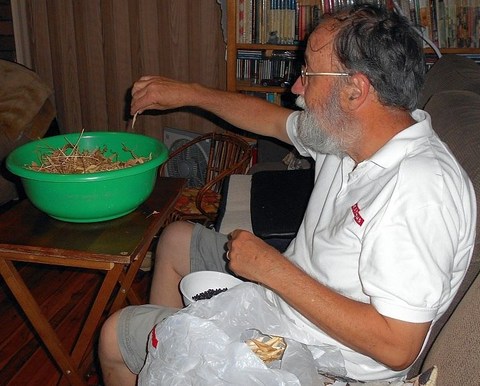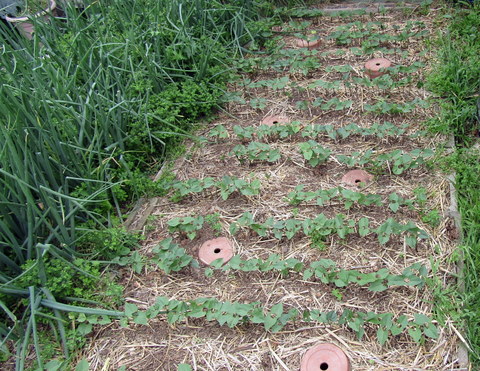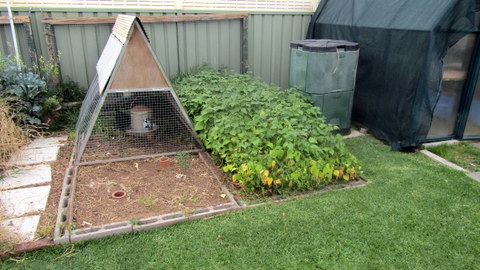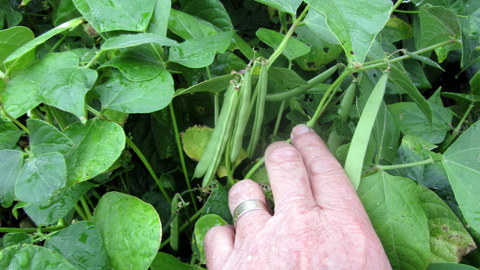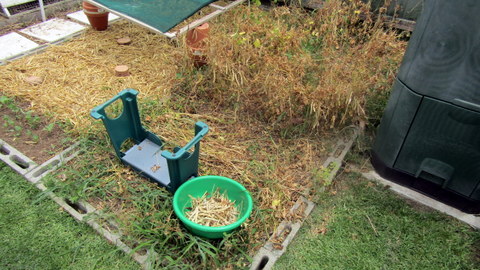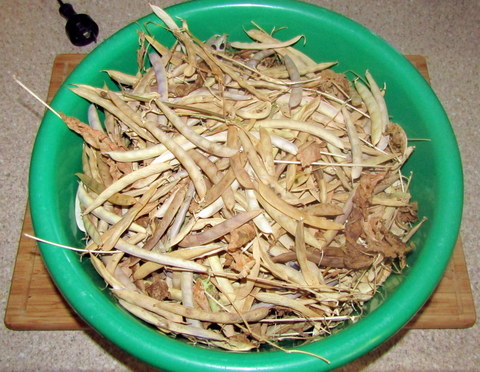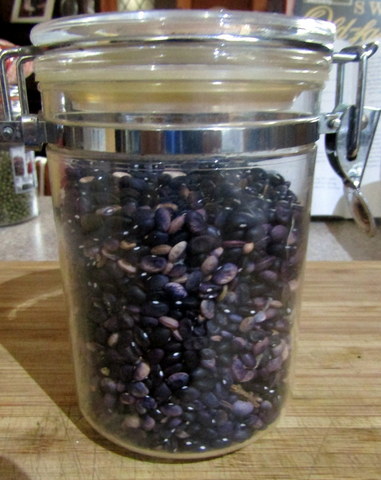Every year for the past few years I have grown a small patch of red kidney beans, they are climbing beans and I have to organise wire for the to climb up each year. This year (2018) when I went to get some for seed there were none left (I use the commercial beans from Woolies), so instead I picked up black beans, which we also eat quite often. My researched suggested that the black beans were dwarf beans, which would suit how I grow, but if this was correct would remain to be seen.
I sowed 100g of beans into one of our 1.2m x 3m veggie patches in the first week of October, which has 6 flower pot ollas installed for irrigation. The beans were sowed in rows 150mm to 200mm apart with the beans being sown 20 to 30mm between them in the rows. The bed got the usual treatment with the chook tractor but was left unplanted for a month or so afterward because it gets shade from the greenhouse and I wanted to make sure it got full sun. Due to the close planting of the seeds the bed was not mulched after sowing.
As luck would have it we got a good shower of rain after the seeds were sown and at least 90% of the seeds came up. They did pretty well and seemed to survive and grow well on the water provided by the ollas, topped up one to three times a week, depending on heat and rain.
The beans became quite a dense stand of foliage and grew to the usual height for dwarf beans, they really didn’t seem to do much after that. They flowered and some did send up a few tendrils but not like the mass vegetation put out by the climbing beans. We got some downpours of rain which was good but they had all flowered and I was just waiting for the pods to dry out. Thankfully we got a week of high thirties/low forties temperatures and they dried out pretty well.
The harvest point is a bit of a judgement call, the pods and the beans inside need to be very dry, but not so dry that the pods shatter and you lose the seeds while harvesting. If anything, the black bean pods seem to hold onto their beans a bit more tenaciously than the red kidney bean pods do so it was less of an issue.
They were ready to harvest by the 31st of December, giving a growing season of about 2 months or a bit less meaning I could easily get at least two crops in during our growing season. This proved to be somewhat less than the red kidney beans which require a growing season of 3 months or so.
To harvest the beans, I started at the front and cut the plants off a bit above ground level, removed all the pods and put them in a dish, then laid the cut-off plants back on the soil as mulch. This left the bean roots and their nitrogen containing nodules still in the ground, where they could rot down and fertilise the soil. It also meant that I could systematically harvest all pods from each plant. Yes, it was every bit as much fun as it sounds, especially as the temperature was around 40°C!
In his book “Farmers of Forty Centuries” (about ancient Chinese agriculture) F.H. King talks about the Chinese taking the bean plants once the beans had been harvest from them, drying them out and then burning them as fuel to cook their food. All I can say is they must have planted an awful lot more beans than I did!
With the beans pods nicely dry and gathered in before the next bout of rain, it was just a matter of stripping the beans out, pod by pod. This is an excellent thing to do while you are watching TV or a movie, and if you can sucker your family members into helping, so much the better. The pods with their beans removed I returned to the veggie patch to also rot down and act as a mulch.
After all of that work, how much worth of beans did we get? A full 500gms or a 5 to 1 yield over our original investment, and will equate to 1500gms or more of cooked beans. Not a bad effort for a little work!
